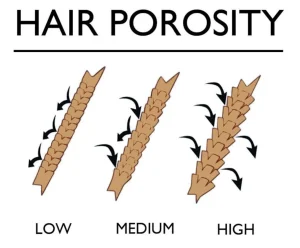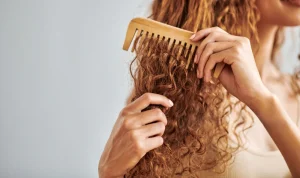 WhatsApp
WhatsAppAs far as the health of your hair is concerned, the structure of everyone’s hair is different, and that differentiation is very important when developing a successful care routine. At Dr. Resul Yaman Hair Clinic Turkey, we realize that the porosity of your hair is among the most critical factors of whether or not your hair can retain moisture.
Certain hair textures are not water-absorbing and hence do not absorb care products as well. If it never dries after shampooing or if conditioner sits right on the surface without penetrating, it is likely low-porosity. This at first may be a letdown, but with the right technique, you can actually wind up making your hair healthier.

Each strand of hair contains three levels, and each is designed to perform a particular function:
In low-porosity hair, the cuticle layer is very compact. Because of this, water, oil, or creams cannot penetrate the hair. This characteristic is somewhat hereditary and thus not something that occurs immediately due to over-styling or chemicals. Excessive heat styling may, though, lead to porosity opening up and leave hair more prone to breakage.
Following are some signs of this low porous hair type:
As soon as you feel these signs, it is important to identify what type of hair you have and do the right care rituals. In our Istanbul hair clinic, we treat every individual’s hair as unique structured and provide tailor-made advice accordingly.

There is a simple home test that you can try to find out what your hair porosity is. Just do the following:
If it stays floating on the surface for a while before sinking, it indicates low porosity. If it floats in the middle, then it’s medium. If it sinks very quickly, then the hair is high porosity. With such a simple trick, you can know more about your hair and style it accordingly.
If you have low porous hair, what you apply to it is most important. Heavy oils are a no-go, as they will cling to the strand and not allow moisture in. Use lighter, water-based products instead. Some great ingredients to add are:
Apply products to your hair when it’s lightly wet. Being in a warm environment with the application of the product also opens the hair strand so the ingredients can penetrate more.
Read more about “Can You Change Your Hair Type With Surgery?”
One of the soft means to open cuticles of hair is with the help of heat. This heat must be kept in check so that it will not damage the hair. These are the ideal methods for you:
If you practice these methods regularly, your strands of hair will be stronger, shinier, and more flexible.
Heavy ingredients weigh heavily on hair like baggage, giving it a dull, flat, and weighted appearance. Our tip is to always read ingredients when selecting products. Watery, light formulations allow your hair to breathe and do not create buildup.
At Dr. Resul Yaman Hair Clinic, we are offering the complete solution for hair. In our clinic, not only do we have hair treatment solutions but also permanent ones. For those who experience the issue of hair loss, we stress that the best solution is a hair transplant in Turkey. This has the benefit of providing you with the best of two worlds: having the naturally aesthetic looks and a permanent solution for your hair.
If you wish to know about your hair structure and perform the correct care steps, we at Dr. Resul Yaman Hair Clinic Turkey are always with you. With the correct low porosity hair treatment, the right steps, and professional support, you can have healthy, strong, and shiny hair.
The clearest signs are products left on the hair and water not being absorbed with ease.
You are able to condition your hair using appropriate products and heat-applied processes.
It can occur in both, just the shape is different.
Yes, it can be frizzy when moisture balance is disrupted.
It may be oily if product is just sitting on top but dry in the inside.
Yes, because of its light construction, it makes hair stronger.